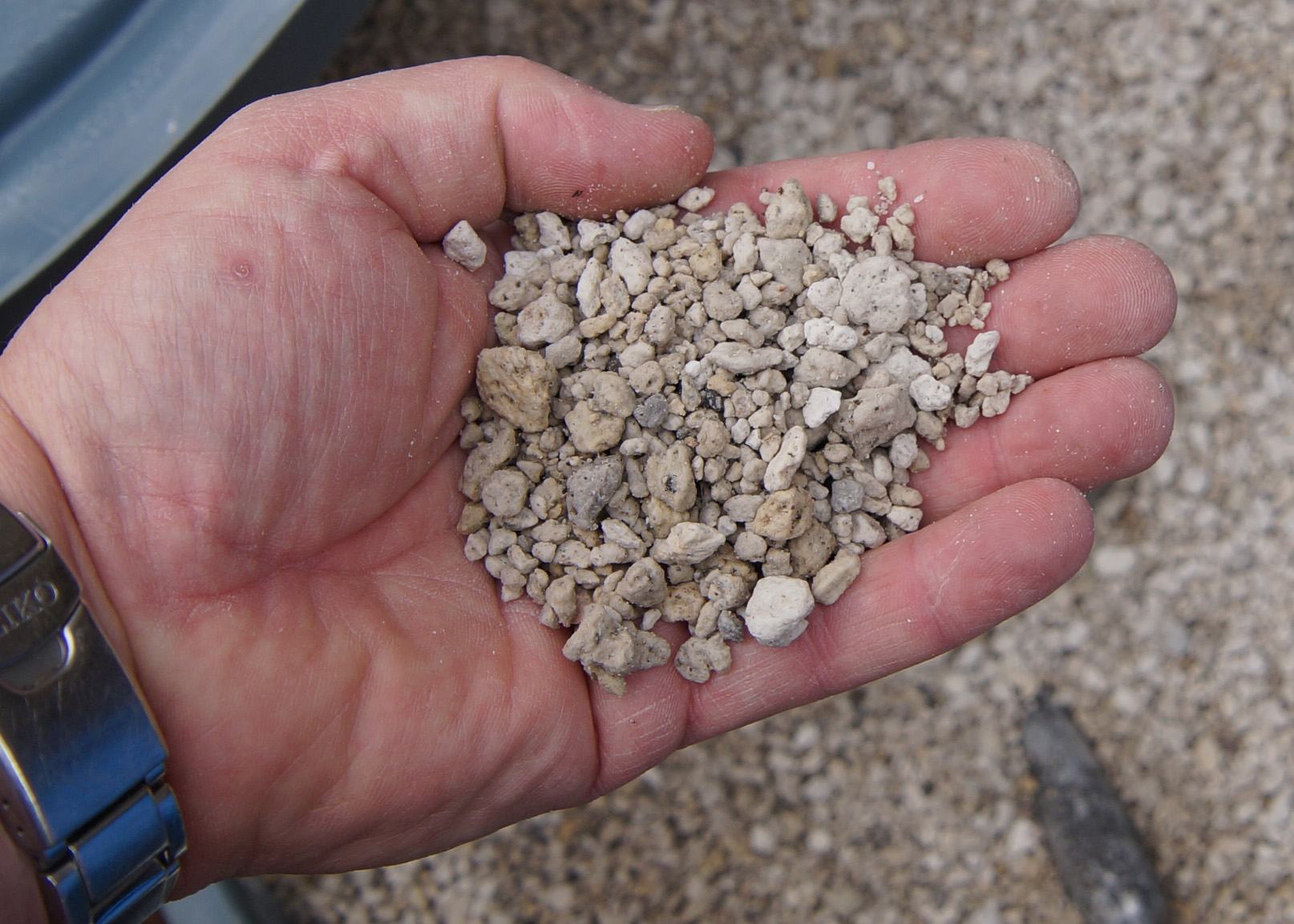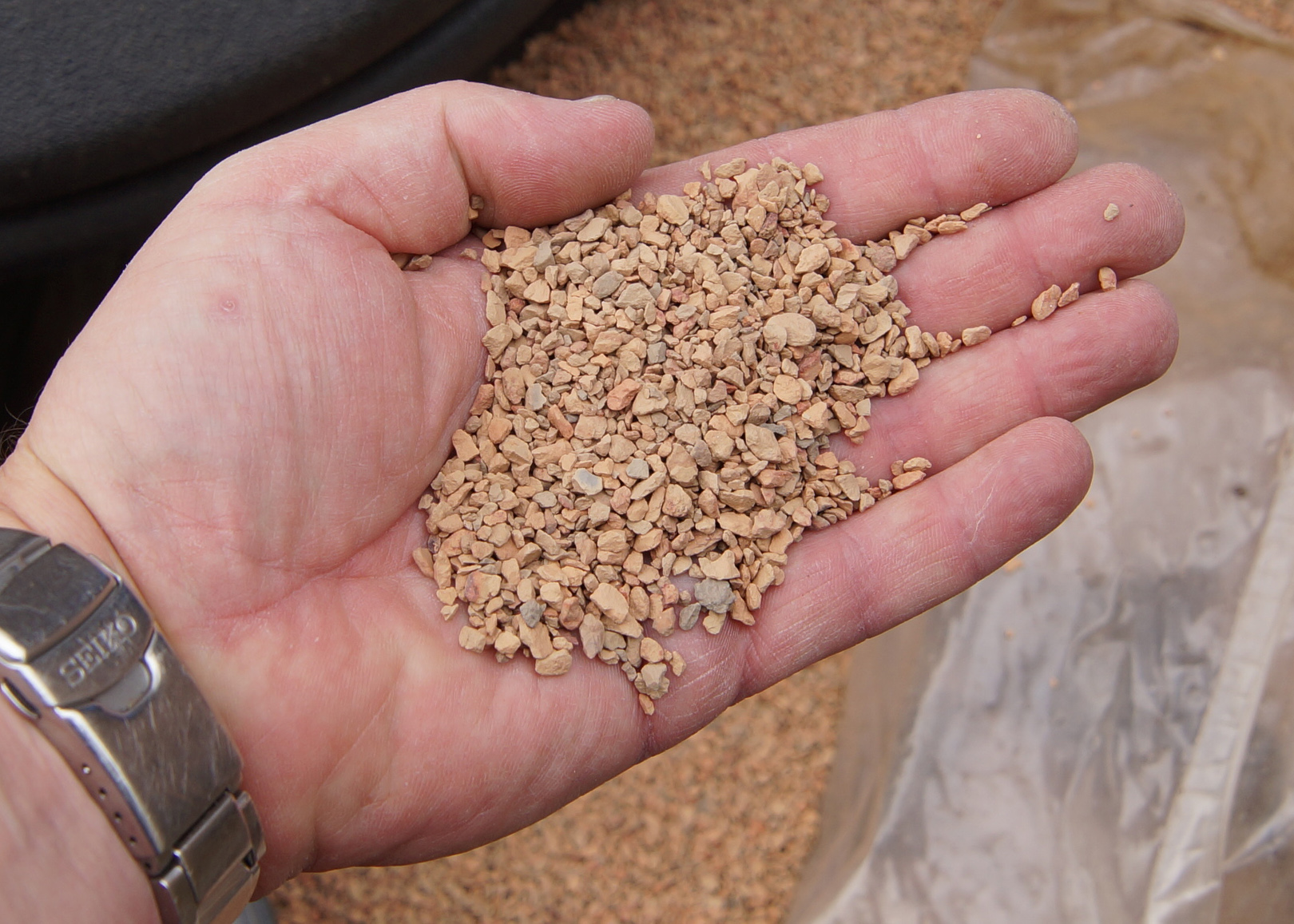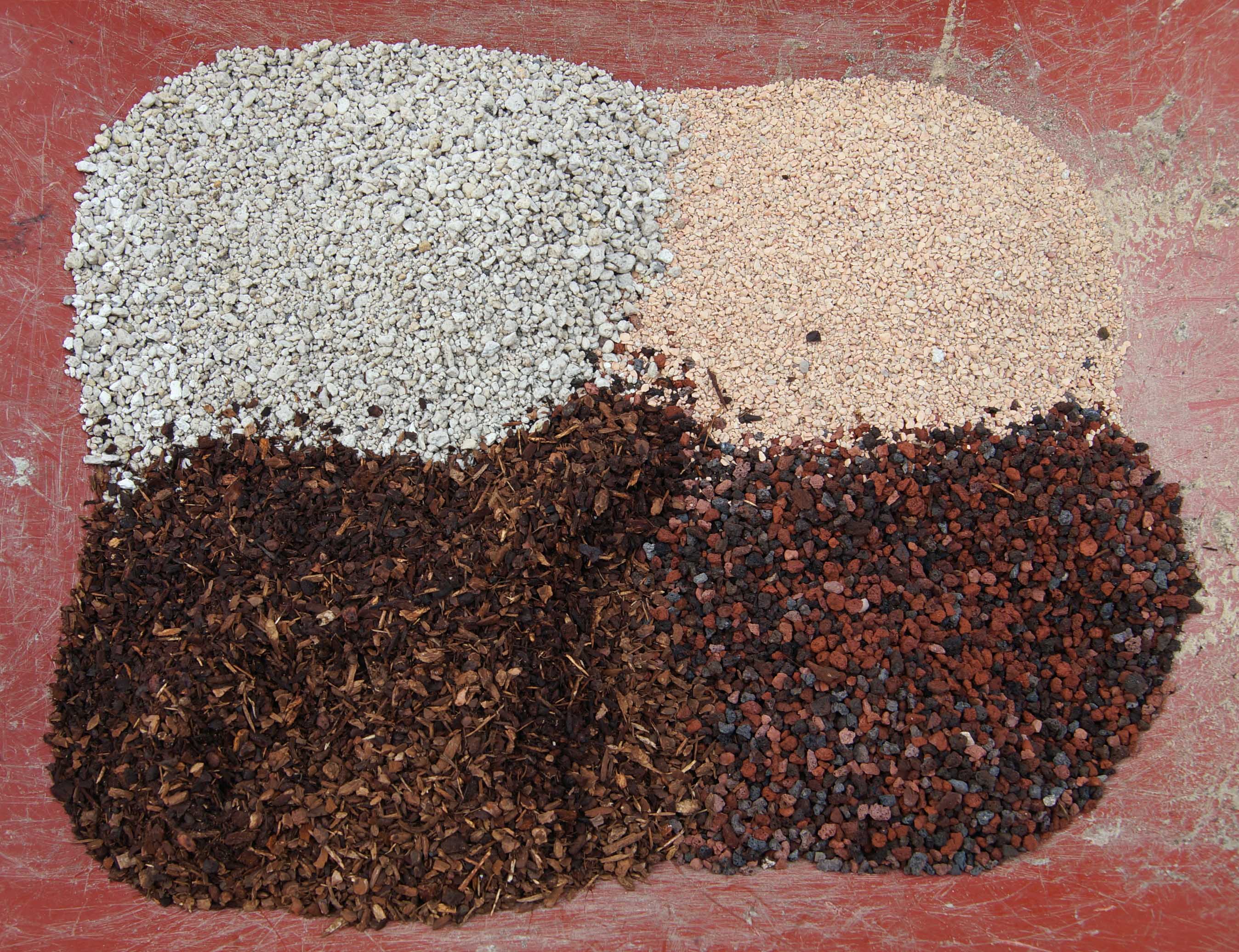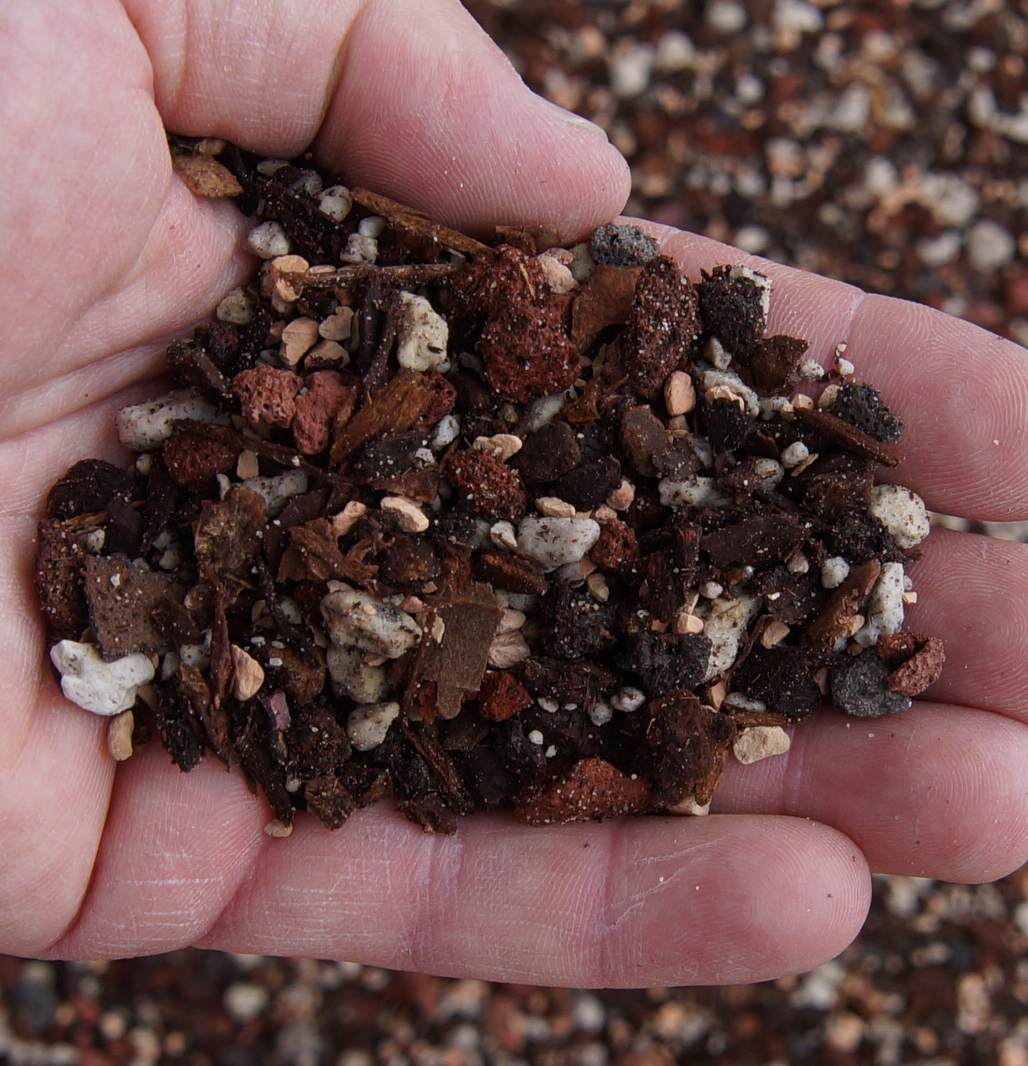No bonsai site would be complete without bonsai soil article, so here is what I use and it works great, your mileage may vary…
Mention bonsai soil on any of the bonsai forums on the internet and you will virtually start a war! Everyone has their own special mix that they claim is the bomb. You’ll hear akadama, kanuma, Boon’s mix, pumice, lava, etc., etc., etc. Then, there is Turface, don’t dare mention it, you will get flogged. My best recommendation to newcomers to the hobby is to seek out others in your area that have been practicing the art for a while and see what they are using. If their trees are healthy and growing well, use that soil. That is what I did initially, and my trees grow well. I have added a few different components to the recipe over the years, but the main ingredients are the same as well as the ration-20% organic, 80% inorganic.
First, let’s talk about akadama and kanuma. Both of these are clay products that come from Japan, and are expensive; mostly due to shipping and partly, I surmise, because it has a certain “mystique” about it since it is primarily what is used in Japan - the veritable holy grail for some. It is, however, not necessary or needed to grow healthy bonsai, even azaleas. In fact, in some areas of the U.S., like mine, it will turn to mush in one season, making it almost impossible to water the following summer. I think it is used in Japan mainly because it is readily available and cheap (for them), much like the soil components we use here.
Now let us look at Boon’s mix, a popular concoction of ingredients that is used by many, including his students. It is interesting that he did not actually come up with the recipe, but his name got associated with it. Kinda like we, in the Heart of Dixie, call any kind of soda a "Coke", even if it is not a Coca Cola or even a Coke product. He is a good artist, Google his name and you can see some of his work. The recipe is basically, equal parts, akadama, pumice, and lava.
The soil I use is what works well in my area of the country, after a few years in the hobby, I have come to realize that your climate is the determining factor in the decision on what to use. I live in Mobile, Alabama, the rainiest city in America; we get on average, 67 inches of rain a year. So, the mix that I use needs to be well draining to prevent the trees from getting too much water and causing root rot. It also gets super hot here also so the soil should be able to retain some moisture and not dry out in a short period, so, the soil must have something in it for water retention unless you want to water several times a day, not realistic or practical for most of us working stiffs. What I, and most in my area, use is a mixture that provides the best of both worlds. Here it is: equal parts of each, pumice, Turface, fir or pine bark, and two parts lava. If you will notice, it is the 80/20 mixture I mentioned in the opening paragraph. If one of the components is unavailable for some reason, I simply up one of the inorganic ingredients to maintain the ratio. The only deviation I make is the soil that I use for azaleas, I add a little more pine or fir bark to mix, as they seem to like to stay a little more moist. This mixture provides excellent drainage and also with the addition of the fir bark, moisture retention for those really hot days.
Mention bonsai soil on any of the bonsai forums on the internet and you will virtually start a war! Everyone has their own special mix that they claim is the bomb. You’ll hear akadama, kanuma, Boon’s mix, pumice, lava, etc., etc., etc. Then, there is Turface, don’t dare mention it, you will get flogged. My best recommendation to newcomers to the hobby is to seek out others in your area that have been practicing the art for a while and see what they are using. If their trees are healthy and growing well, use that soil. That is what I did initially, and my trees grow well. I have added a few different components to the recipe over the years, but the main ingredients are the same as well as the ration-20% organic, 80% inorganic.
First, let’s talk about akadama and kanuma. Both of these are clay products that come from Japan, and are expensive; mostly due to shipping and partly, I surmise, because it has a certain “mystique” about it since it is primarily what is used in Japan - the veritable holy grail for some. It is, however, not necessary or needed to grow healthy bonsai, even azaleas. In fact, in some areas of the U.S., like mine, it will turn to mush in one season, making it almost impossible to water the following summer. I think it is used in Japan mainly because it is readily available and cheap (for them), much like the soil components we use here.
Now let us look at Boon’s mix, a popular concoction of ingredients that is used by many, including his students. It is interesting that he did not actually come up with the recipe, but his name got associated with it. Kinda like we, in the Heart of Dixie, call any kind of soda a "Coke", even if it is not a Coca Cola or even a Coke product. He is a good artist, Google his name and you can see some of his work. The recipe is basically, equal parts, akadama, pumice, and lava.
The soil I use is what works well in my area of the country, after a few years in the hobby, I have come to realize that your climate is the determining factor in the decision on what to use. I live in Mobile, Alabama, the rainiest city in America; we get on average, 67 inches of rain a year. So, the mix that I use needs to be well draining to prevent the trees from getting too much water and causing root rot. It also gets super hot here also so the soil should be able to retain some moisture and not dry out in a short period, so, the soil must have something in it for water retention unless you want to water several times a day, not realistic or practical for most of us working stiffs. What I, and most in my area, use is a mixture that provides the best of both worlds. Here it is: equal parts of each, pumice, Turface, fir or pine bark, and two parts lava. If you will notice, it is the 80/20 mixture I mentioned in the opening paragraph. If one of the components is unavailable for some reason, I simply up one of the inorganic ingredients to maintain the ratio. The only deviation I make is the soil that I use for azaleas, I add a little more pine or fir bark to mix, as they seem to like to stay a little more moist. This mixture provides excellent drainage and also with the addition of the fir bark, moisture retention for those really hot days.
Sifting soil is another thing that you see mentioned in soil articles. I find it unnecessary, and rarely do I sift anything. On the rare occasion that I do sift, it is because I need a smaller particle size for shohin or mame sized trees. The fines from the sifting are great for rooting cuttings or shito size tree. There are those who will insist that you must sift, and I can only say that I have found I can grow healthy trees without breaking out the sifter. If you do decide sifting is for you, please protect your lungs and wear a dust mask. Not one of the cheap ones you get at Walmart, get some of the ones made by 3M with two straps that will seal good against your face. The dust generated by sifting contains silica and breathing it, over time, you can get a condition known as silicosis.
I did a lot of research for this article, there are many other buzz words and phrases you will see thrown around in bonsai soil discussions. Words like cation exchange, surface tension, pH, permeability, etc., but I decided that I would leave those topics out. Sometimes I even wonder if those doing the word throwing even know what the words mean and are just spouting them off to just look like they know what they are talking about. In the end, those topics matter little in the grand scheme of things when it comes to trees in pots. The only thing that matters is that the soil is free draining and holds enough moisture to get the tree through to its next watering. If you have these two qualities you will get great growth above and below the soil.
I did a lot of research for this article, there are many other buzz words and phrases you will see thrown around in bonsai soil discussions. Words like cation exchange, surface tension, pH, permeability, etc., but I decided that I would leave those topics out. Sometimes I even wonder if those doing the word throwing even know what the words mean and are just spouting them off to just look like they know what they are talking about. In the end, those topics matter little in the grand scheme of things when it comes to trees in pots. The only thing that matters is that the soil is free draining and holds enough moisture to get the tree through to its next watering. If you have these two qualities you will get great growth above and below the soil.










